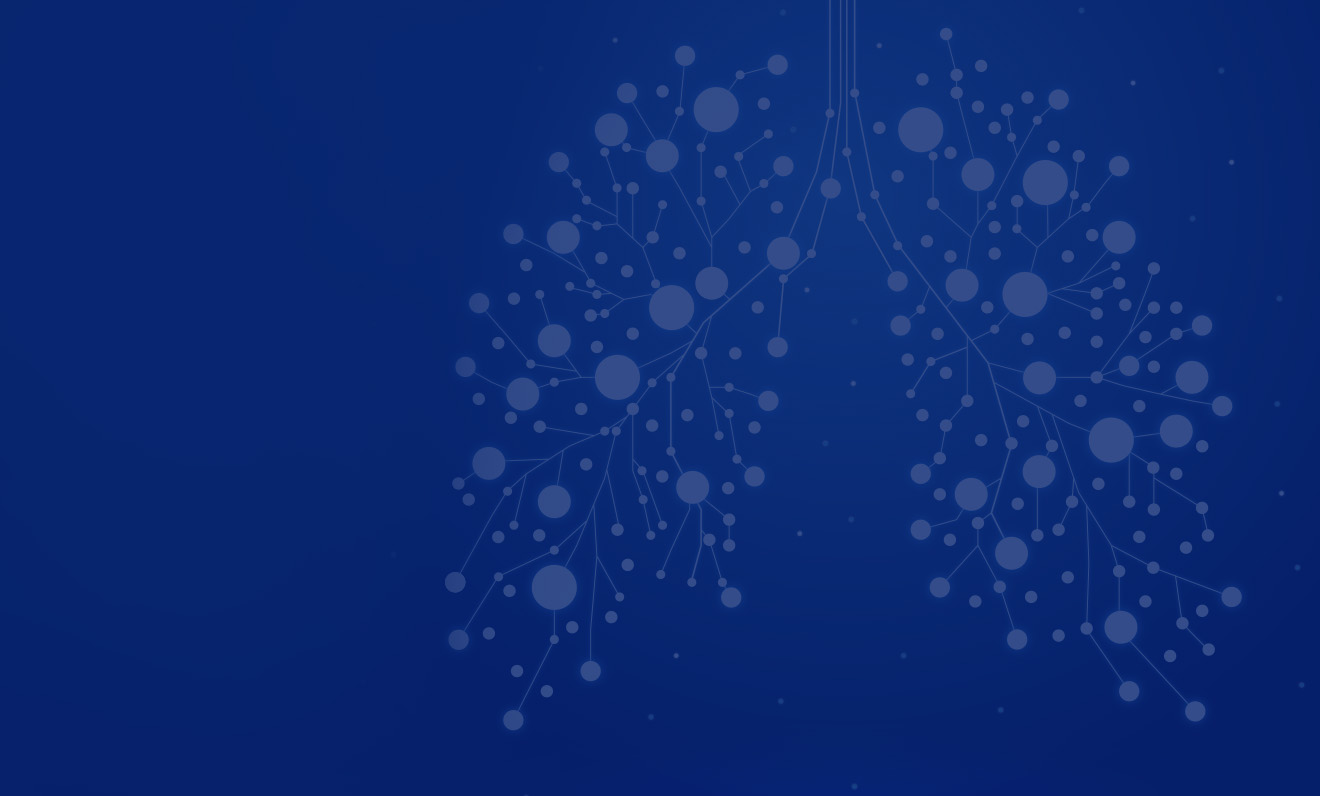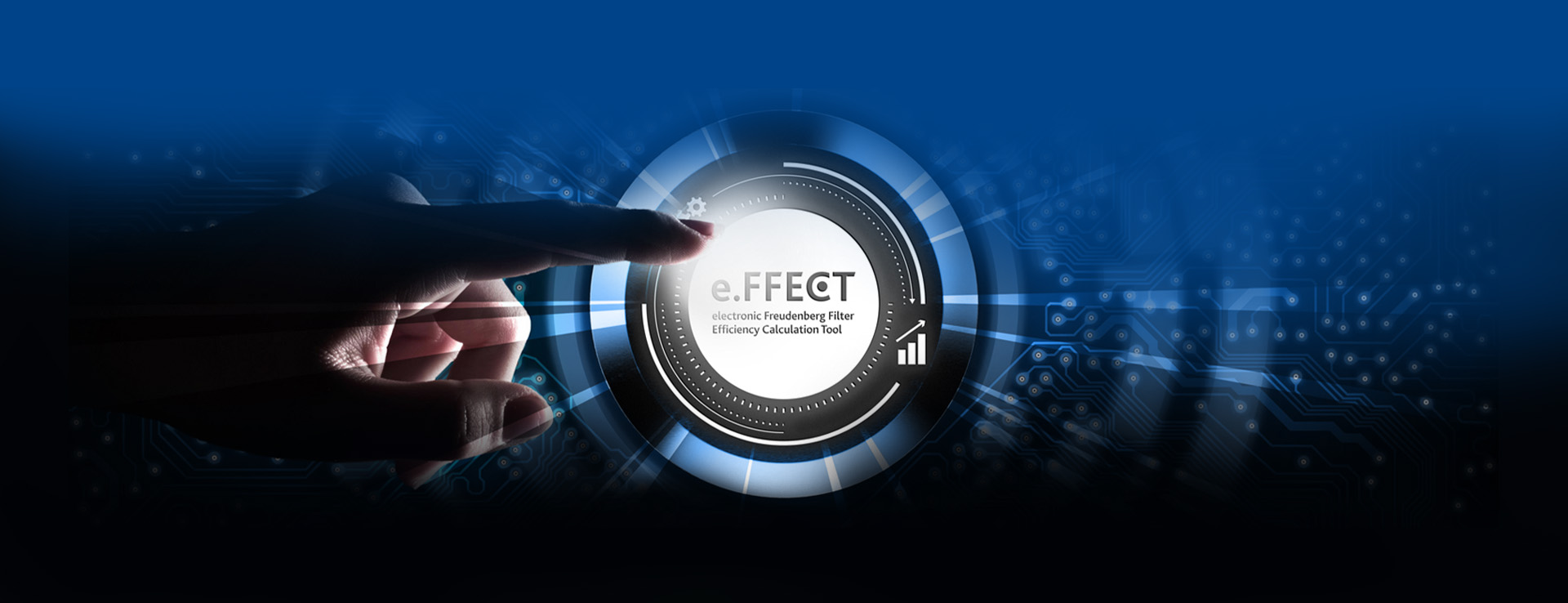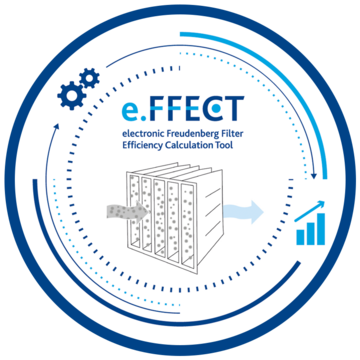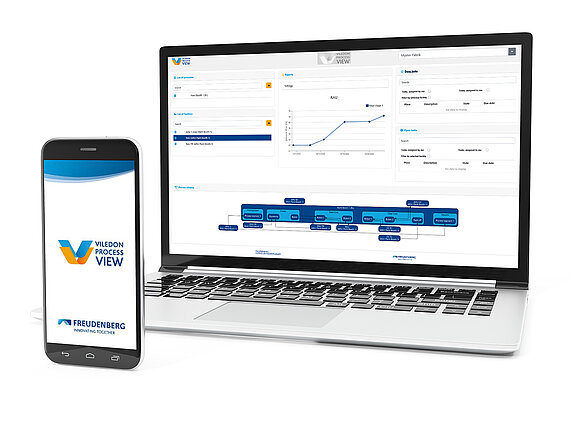
Breathing space:
Digitalization optimizes
filtration concepts

One way to achieve this is to use bio-hacking, which understands the body as a system that can be analyzed, controlled, and altered for positive effect. The condition of your body is determined based on pulse, body temperature, sleep rhythm, etc., with the aim of optimizing it. A watch or ring provides the data; everything else is done by software on a mobile device. The origins of this trend towards holistic optimization lie in the industrial sector. Ever greater amounts of data and increasingly accurate process mapping are making it possible for digitalization to achieve previously unattainable optimizations.
These developments are also opening up unimagined possibilities for analog products such as filters.
Because digital optimization is understandably always associated with electronic components, non-electronic system components are often forgotten. What makes systems more efficient, however, is often not digitalization per se; it is the transformation achieved by changing workflows and intelligent processes. Digitally connected components can provide the basis for transformation.

When it comes to planning and designing filter systems, there is also seemingly no end to the options available. The performance of two- and three-stage systems improves successively: the properties of the respective filters have an effect on the other filters. This makes it difficult to select the most efficient filter combination in any particular case and means that the optimum combination varies from system to system.
Like the pulse and body temperature in bio-hacking, Freudenberg Filtration Technologies’ digital e.ffect tool can be used to record on-site parameters such as humidity, particle input and air purity, so they can then be used as a basis for planning the filter concept. This results in an optimized filtration solution that is extremely energy-efficient right from the start and delivers the desired results.

Digital documentation management is becoming increasingly important to ensure that every member of staff has information on the system’s filter configuration, process parameters, and condition data at all times. Systems with Viledon filters can be viewed using Viledon Process View.
This simple and convenient process is performed using the app to scan the system’s QR code. It means that customers always have access to up-to-date data. The information stored here includes tests and maintenance data, as well as information on pressure differences and air velocities. Intelligent data linking makes it possible to quickly identify inefficient systems. This in turn allows planning on a condition-dependent basis, which is very cost-efficient.

As with bio-hacking, linking complex data and information makes it possible to optimize the efficiency of analog components using intelligent digital tools. In practice, this new generation of filter concepts has the advantages of longer filter service lives, fewer unplanned shutdowns, and minimized energy consumption. This saves costs and increases safety. It also helps to protect people and optimize processes.
The future offers new potential for optimization. The combination of improved filters, intelligent software, and comprehensive monitoring will gradually expand the limits of efficient filtration systems. Optimized filter elements and systems will play a very significant role in the challenge of making production processes climate-friendly.
Sources:
https://www.brainperform.de/biohacking-anleitung-fuer-anfaenger/
https://www.ardmediathek.de/video/rabiat/rabiat-die-selbstoptimierer/das-erste/Y3JpZDovL2Rhc2Vyc3RlLmRlL3JhYmlhdC9hMmM4M2I0My01NDBmLTQ3OWMtODc1Yy0wN2MwOWFmNmIxY2E
https://www.zukunftsinstitut.de/dossier/megatrend-konnektivitaet/